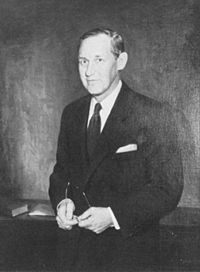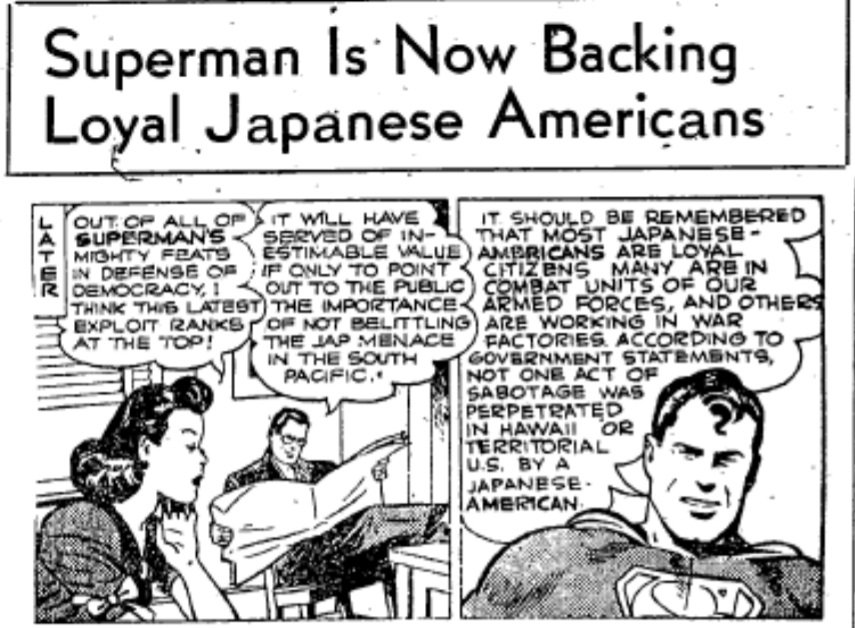Translate
Sunday, February 10, 2013
Historical Events that Impacted Lorena Hickok
Historical Events
 |
| Harry Hopkins |
In W. Virginia, camps set up for 4000 undernourished children. Food cost 30 cents per child per day. The children were so malnourished that the average weight gain was 5 pounds in the first 2 weeks
In New Orleans a government worker was mixing with a crowd of transients when he was accosted by a woman who offered him sex. He said, “I can’t. I haven’t any money.” She said wearily, “Oh, that’s alright. I only costs a dime.”
In Colorado, Hickok spoke with the workers in a sugar beet field. One was a 10 year old girl who had been working in the field for 2 years, from 6AM to 6 or 7 at night.
In South Dakota people were eating boiled thistles. A child fainted in school; the teacher told her to go home and eat. She said she couldn't, "it’s her sister’s turn to eat that day.
In Colorado, Hickok spoke with the workers in a sugar beet field. One was a 10 year old girl who had been working in the field for 2 years, from 6AM to 6 or 7 at night.
In South Dakota people were eating boiled thistles. A child fainted in school; the teacher told her to go home and eat. She said she couldn't, "it’s her sister’s turn to eat that day.
 |
| Lorena Hickok |
2. From 1929 to 1933, almost one in every seven businesses failed. In 1933, when Lorena Hickok began her travels, 13 million Americans were out of work. That number amounted to about 25 percent of the workforce. In comparison, only about 3.1 percent of the population had been jobless before the stock market crash in 1929. The stock market crash put Hickok our of work for most of the time. In 1928, Hickok joined the Associated Press. She was very happy with her job at that time and was very concentrated with her job. She never took a leave and many people told her to but, she wanted to do this job because she love it. Then when the Stock Market Crashed, everything was destroyed. She didn't loose her job, but she was getting paid 50% less. She had to pay for almost everything in her family and could not afford to get paid very little. Also she was thinking of working at two jobs, but she would be very tired and not do a good job.
3. In 1933, Roosevelt launched the New Deal. Before the New Deal, Hickok reported that many found it difficult to admit they needed help. After the News Deal, there were few places the poor and unemployed could turn for help. Herbert Hoover had believed that private charities could cope with the economic crisis, and he had encouraged Americans to rely on them to do so. Many wealthy Americans generously supported charities to help the less fortunate. In New York City, charitable donations for the needy increased from $4.5 million in 1930 to $21 million in 1932. These donations also helped Hickok in a way that after she save up all her money, she also donated part of her money to local charities. He thanked Roosevelt that he launched the New Deal. She was very grateful for all the help she got and gave it back in the same way.
 |
| Eleanor Roosevelt (Right) and Lorena Hickok ( Left) |
4. Both Hickok and Eleanor were very connected. Hickok learned important points of the New Deal through Eleanor. Eleanor invited Hickok on almost every trip she took. They both had a goal of removing poverty from the US and the Ned Deal did the same thing. Relief, recovery, and reform were the goals of the New Deal legislation that was passed from 1933 through 1935 and Because relief was very much in need, it was the first priority for the first 100 days of the new Congress. They both tried to make new regulations to prevent poverty and give relief to the poor. She took this lesson and then spread it through media since she was a reporter and she also gave some money to people to help them When she was a child, Hickok suffered through a lot of bad events. The Great Depression affected all of her childhood that she had to quit college and find a job somewhere else. After the Great Depression she was hired to work at the World's Fair.
5. Roosevelt invited Hickok to stay at the White House. From 1940-1945, Hickok had inside access to most of war news. Also she worked for the Democratic Party on women's issues. During World War II, Hickok's job was to expose partisanship of zealots and minimize their influence on women. She had to persuade women to support the war and defeat fascism and leading her to protect women's rights. The Opponents after Pearl Harbor were countries who long had opposed Roosevelt and she had to fix this. In doing this, Hickok leaned to be a good leader and not persuade anyone else to tell you something different. Also her lessons that she learned in school helped her to be recognized as the best leader for helping persuade women to support the war. World War II impacted Hickok to know how women were feeling towards the war and she started to earn more money and help her family recover from the Great Depression.
6. Since Hickok had full access to the war news, she wrote many books. One of her famous book was " Reluctant First Lady ". In the book she states that "
Not in large sums to organized charities although in
5. Roosevelt invited Hickok to stay at the White House. From 1940-1945, Hickok had inside access to most of war news. Also she worked for the Democratic Party on women's issues. During World War II, Hickok's job was to expose partisanship of zealots and minimize their influence on women. She had to persuade women to support the war and defeat fascism and leading her to protect women's rights. The Opponents after Pearl Harbor were countries who long had opposed Roosevelt and she had to fix this. In doing this, Hickok leaned to be a good leader and not persuade anyone else to tell you something different. Also her lessons that she learned in school helped her to be recognized as the best leader for helping persuade women to support the war. World War II impacted Hickok to know how women were feeling towards the war and she started to earn more money and help her family recover from the Great Depression.
6. Since Hickok had full access to the war news, she wrote many books. One of her famous book was " Reluctant First Lady ". In the book she states that "
Not in large sums to organized charities although in
later years in the White House, when her earnings were very large, she gave huge sums to the American Friends Service Committee and, during World War II, to the American Red Cross. But in the days before she went to the White House she liked to give money directly to people who needed it."
Through the events that she faced, they impacted Hickok to help others and give back to the community. Always help the poor and never be selfish. So through this, she started many charities and food drives. She know how it would be to not be cared by others and used this event to fuel her throughout her life.
7. Hickok's diabetes worsened in early 1945, forcing her to leave the DNC. In 1947, Hickok secured a job with the New York State Democratic Committee. Also in 1945, FDR died. So, Eleanor was appointed to the US Delegations to the United Nations. The next president elected was Harry Truman. Truman was very different from FDR and Hickok didn't like him. The Cold War began when Kim II Sung invaded South Korea and Truman didn't like this. Truman wanted a naval blockade of Korea and since the US was on heavy budget backup, The US could not enforce it and called for the UN to do it. The war was a stalemate for two years until an armistice was signed. Over 30,000 Americans were killed. The US had many budget problems. This forced Americans to cut many things. We had to supply the soldiers with food and this affected Hickok. The wages dropped her family budget by 60% and she could not afford to loose her job. She also had diabetes and had a hard time keeping up with it.
8. The Korean War forced the US to cut the budget and in turn cut some jobs. This and Diabetes forced Hickok to quit her job and hey move to a cottage in Hyde Park. There she started to write books aimed at elementary school readers. She raised a lot of money by publishing the books. Then she took the money and used it to supply food to the soldiers in the Cold War. In return she got aid from the government. At this time Eleanor was working for the rights of women, the poor, minorities and workers. So the cold war affected her to provide food and in return she got money for the food.
9. The Great Depression was one of worst event in US History. The Dust Bowl was caused by drought and erosion. People didn't have money to water their crops and there was very little rain. Hickok was forced to save food and most of her food was destroyed. Also the Great Depression caused the US to cut wages and most of the banks closed. She had to live in poverty and no food until the Great Depression was done.
10. Also the Great Depression forced the banks to close. FDR did may things to help the people and many people liked him. He hired investigators to investigate the banks and keep the good banks open. But this didn't help Hickok. She never got married because the great depression caused her to loose all of her money and also she was in a relationship with Eleanor.
Saturday, February 9, 2013
Political Changes that Occurred Between 1929 and 1950
Political Changes
Since Lorena Hickok had a very close relationship with the first lady, Eleanor Roosevelt, who was very involved in Democratic Party politics, Hickok inherited the same political view. Hickok followed Eleanor everywhere she went and saw what Eleanor was doing to help and followed her in the same path. Two days after becoming the first lady, Eleanor had the 1st press conference with 35 women reporters. One of then was Lorena Hickok. Hickok told Eleanor that she wanted to help women reporters keep their jobs during the depression. Ever since the 1st press conference, Eleanor would invite Hickok to keep the American people informed about her White House like and the political activities that were going on. For a very long time Hickok lived at the White House and learned how to be a politician and act like one. Eleanor taught Hickok all the ideas and trick to be a successful political person. This changed Hickok's political view points and that is what Eleanor's goal was. As this went on Hick's attitude towards the government changes. Before, Hickok was very angry at the government because she was getting paid very much as a very young adult. After she met Eleanor at the 1st press conference, Hickok told Eleanor about her problems and she want a change at all the reporters. This made Eleanor very concerned and took part and making a change. This made Hickok realize that the government and the new president/first lad was not bad at all.
Economic Changes that Occured Between 1929 and 1950.
Economic Changes
Since Hickok failed
college, she was hired at a Train Station to cover the Train's Arrivals
and Departures for $7 week. She joined the Milwaukee Sentinel, in an
attempt to following the footsteps of Edna Ferber, a novelist and reporter. She
was hired as a society editor, but she quit that job and moved to the city
where she wanted to be an interviewer. As an interviewer, she interviewed
famous celebrities such as actress Lillian Russell, Opera Singers Nellie Melba
and Geraldine Farrar. She also quite her job there because she didn't like the
city and moved to Minneapolis in order to work for the Minneapolis
Tribune. She was given unusual opportunities for a female reporters such as the
Paper's Chief Reporters. She had to cover politics, sports and prepare
editorials. In 1923, Hickok was awarded for writing the best story of the month
written the President Harding's funeral train. As a reporter and interviewer
she was becoming very famous and received more award than any other reporters.
In Minneapolis, Hickok was living with a reporter, Ella Morse and in 1926,
Hickok was diagnosed with Diabetes and Morse really persuaded Hickok
to quit that job and take a leave so they could be together and Hickok could
write a novel. They both went to San Francisco and Morse unexpectedly left
Hickok and eloped with her boyfriend. She regretted quitting he job,
but she had to for her friend and now her friend left Hickok. She didn't want
to return to Minneapolis, so Hickok moved to New York and got another job at
the New York Daily Mirror. She worked there for about a year and could not
forget about her friend, so she quit that job also. She was regretting every
job that she quit and she took a month leave to refresh her mind. Then in 1928,
she joined the Associated Press, where she became the top correspondents.
She wrote a story in November 1928 about the sinking of the USS Vestris. Then
she published it in the New York Times. She was the first woman to appear in
the paper and everyone was impressed about her. She then began to
report about the Lindbergh Kidnapping and other events. She became so
famous that she did not want to quit her job here and by 1932, she was known as
the “nation’s best-known female reporter".
Social Changes That Occurred Between 1929 and 1950
Social Changes
Hickok was assigned to
interview Theodore Roosevelt for the Associated Press in 1928.
In October of 1932, Missy LeHand passed away, so First Lady, Eleanor
Roosevelt picked Hickok to accompany her to the funeral in New York.
This was the beginning of a very long relationship that would hurt her future
as a Journalist. By the time Roosevelt's inauguration in 1933, Hickok was
Eleanor's closest friend. They both took trips to Albany and Washington D.C.
and spent every day talking about something. Hickok was invited to
dinner at the Roosevelt's every Sunday and on other days, Hickok
joined Eleanor at the Theater, Opera or had dinned at
Hickok's apartment. Also at Roosevelt's inauguration, Eleanor
was given a Sapphire Ring given to by
Hickok. The next day, Hickok interviewed Eleanor Roosevelt in the White
House Bathroom. At this time, Hickok was a very close relationship with Eleanor
and she had a very hard time interviewing people. Hickok and Eleanor were
separated, so they talked to each other via telephone and letters. Eleanor also
put a photo of Hickok in her room and she would kiss it every night and morning.
Since Hickok was writing a biography of First Lady, Eleanor was writing 15 page
letters to Hickok. This relationship was disputed by many historians and Eleanor was in many relationships with other women. Eleanor's biographer, Blanche Cook was arguing that the relationship was " romantic" and generated national attention. This destroyed Hickok's Journalism career. She was admitted to almost every single publishing company, but resigned because she could not concentrate about her work.
Lorena Hickock's Short Biography
Who Was Lorena Hickok?

Lorena Hickok was born on March 7, 1893 in
Wisconsin. Her mother was a dressmaker and her father was a butter maker. Her
cousin helped Lorena to finish high school after her mother died when she was
14. After she failed college, Lorena went into Journalism and worked for
Minneapolis Tribune and the Associated Press as a reporter. This job jot her
famous, so by 1932, she because the nation's best female reporter. She was assigned to cover Roosevelt
ans Hickok struck up a close relationship with the soon-to-be First Lady. As
this went on many people thought that Hickok was having a close relationship
with Eleanor Roosevelt. Later that year, Hickok was compromised as a reporter, so she left the AP and began work
as the chief investigator for the Federal Emergency Relief Administration (FERA). Following complications with her diabetes, Hickok resigned
from FERA in 1936 and worked for three years promoting the 1939 New York
World's Fair. From 1940 to 1945, she served as the executive secretary of
the Women's Division of the Democratic
National Committee, living at the White House for most of this time. In 1947, Lorena began working for the New York State Democratic Committee. Then her health began to decline, so she resigned everything and moved to Hyde Park. Hickok died in 1968 on the Roosevelt Estate.
Subscribe to:
Posts (Atom)






